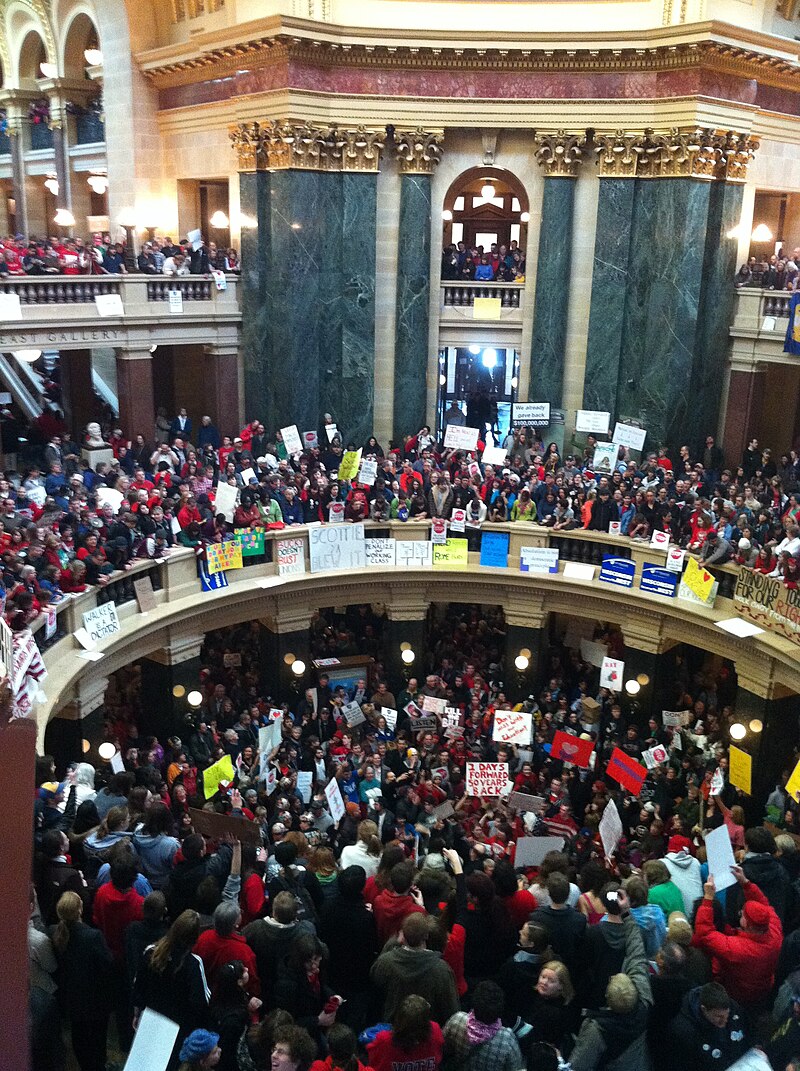Happy Labor Day weekend! We here at SAIL can’t believe it’s September! We are so grateful to our members, volunteers, and vendors for pivoting with us as we adjust to unprecedented times. We have lots of fun and interesting virtual activities planned for you in the coming months. Meanwhile, on today’s blog, we’ve got an interesting history lesson that we hope you enjoy.
Some of us may think of Labor Day as the final day of summer, an opportunity (pre-pandemic) to go on vacation, or a nice long weekend. But the holiday actually has an important history, and Wisconsin has a storied relationship with it.
The origins

Labor Day sprouted from the increased trade movements and labor unions of the late 19th-century. Labor parades and picnics became popular in many states, including Wisconsin, as unofficial celebrations. The first Labor Day Parade was held in New York City in 1882. In 1887, Oregon was the first state to adopt an official Labor Day.
As these movements grew, advocates proposed setting aside a federal holiday to celebrate workers. These desires intensified due to the the 1894 Pullman Strike, which resulted from low wages and 12-hour workdays for the Pullman Company, a railroad car manufacturer. 125,000 workers went on strike and brought the economy to a grinding halt. President Grover Cleveland obtained an injunction in federal court to stop the strike, and when workers refused to concede, he sent federal troops to intervene. This ended in the loss of 30 lives. In an effort to placate his constituents, Cleveland signed a national Labor Day holiday into law, though many were not fooled by his effort.
Wisconsin and the labor movement
Wisconsin’s first Labor Day parade occurred in Milwaukee in 1888 on Artisans’ Day. Thousands of iron workers, shoe and boot makers, stone cutters, cigar makers, printers, and others gathered with their families in Schlitz Park to celebrate with an afternoon of speeches and games.
As the labor movement intensified, Milwaukee continued its celebration. See a flyer from a 1900 celebration on the Wisconsin Historical Society’s website here. A program from the 1900 Labor Day celebration contained the following passage:
“… year after year we walk up to the polls and vote the old party ticket, and put our necks under the yoke of the capitalist just as the well-trained ox walks under his master’s yoke, and then we wonder why we are no better off than the ox. The great majority of the working men realize that they have hands to work with and a stomach to feed, but they appear to have entirely forgotten that they have brains to reason with. Come now and let us reason together. Let’s swear off being oxen and nominate and elect men from the ranks of labor, whose interests are our interests…We have been oxen long enough.”
Beginning in the early 1900s, professors at UW-Madison began collecting stories about the labor movement, and the Wisconsin Historical Society now holds one of the nation’s largest archives of research on workers and unions. You can learn more here.
In 1959, Wisconsin was the first state in the union to adopt collective bargaining laws. This allowed union workers to have a say in the ways their unions supported them. Other states quickly followed suit.
Fighting for change in Wisconsin

The first labor unions in Wisconsin were formed in Milwaukee in the mid-1800s with a bricklayers’ union in 1847 and a carpenters’ union in 1848. The Knights of St. Crispin, a shoemakers’ union, formed in 1867 and became the largest union in the nation.
In the beginnings of the labor movement, while many states fought for fairness with strikes and boycotts, Wisconsin residents used the tactic of lobbying for fair legistlative practices. They also were unique in that they organized by industry rather than by skill in an order to include more workers in the effort.
Some strikes did occur, and not all for good reasons. While the strikes protested low wages and harsh working conditions, some also protested the hiring of immigrants and women, particularly African American women. Learn more through this NPR story.
The labor movement has not been linear, with many still threatening to disband unions since Labor Day was named a holiday. A notable recent labor-related event occurred during the administration of Governor Scott Walker in 2011.
Labor Day Today
Today, many Americans take the first Monday of September off from work to celebrate union jobs that protect from harsh conditions, allow for collective bargaining, and support equal pay for workers. Since social distancing may be keeping us from our usual picnics and gatherings, here are a few links to peruse as we celebrate this American holiday and honor those who risked their lives to make it possible.
History of Labor Day – History Channel
Why Labor Day is in September – VOA News
Labor Day Fast Facts – CNN
Surprising Labor Day Facts – Reader’s Digest
Do you have a story about the labor movement or unions that you’d like to share? We love to hear from our members! Call 608-230-4321 or e-mail info@sailtoday.org to tell us about it!
